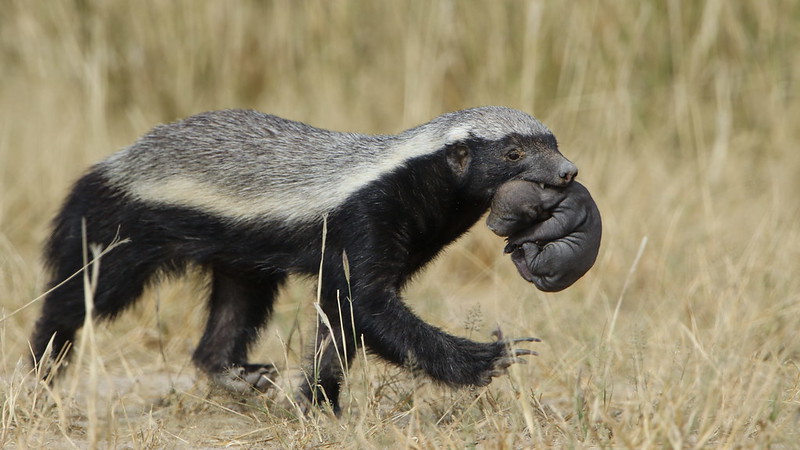Honey badgers are unique creatures, and it’s not without reason there is an Afrikaans expression that goes: “so taai soos ‘n ratel” (as tough as a honey badger). These animals are known to take on predators much larger than themselves, like lions.

Credit: Derek Keats
They can eat nearly anything and can be quite aggressive when provoked. Yet for all their bravado, they aren’t spotted easily. Here are some interesting facts about honey badgers you probably didn’t know.
They’re quite clever and somewhat conniving. The infamous Stoffel the Honey Badger is a brilliant example after he escaped from his enclosure at a rehabilitation centre in Hoedspruit countless times some years ago. Watch this:
Conservation status
The species is currently listed as ‘Least Concern’ by the International Union for Conservation of Nature (IUCN) but the population has seen a decline in recent years due to persecution by beekeepers. They are sometimes unintentionally poisoned as they are scavengers. They are also hunted for both bush meat and traditional medicine use, reports SANBI.
Honey badgers are widely found across sub-Saharan Africa as well as some other parts of the world like Asia. These animals play an important role in the ecosystem and agricultural community as they feed on rodents considered pests by farmers. However, they also love bee larvae and are sometimes considered a threat to the beekeeping industry for the damage they can do to commercial beehives, according to SANBI.
Fun facts
-These animals have foul-smelling glands underneath their tails similar to skunks which they use for marking their territory, but can also emit the scent when they feel threatened.
-Their Latin name, Mellivora capensis, translates as “honey eater of the Cape,” according to Africa Freak, and testifies to their love of honey.
-The word “ratel” (their Afrikaans name) means “rattle” in Afrikaans, and this is due to a loud rattling sound they make when they get ready to fight or ward off an enemy.
-Their skins are 6 millimetres thick, which is a lot thicker than most other animals.
-Honey badgers are born blind, and even in adulthood have very poor eyesight. Their strong sense of smell makes up for it.
ALSO READ














